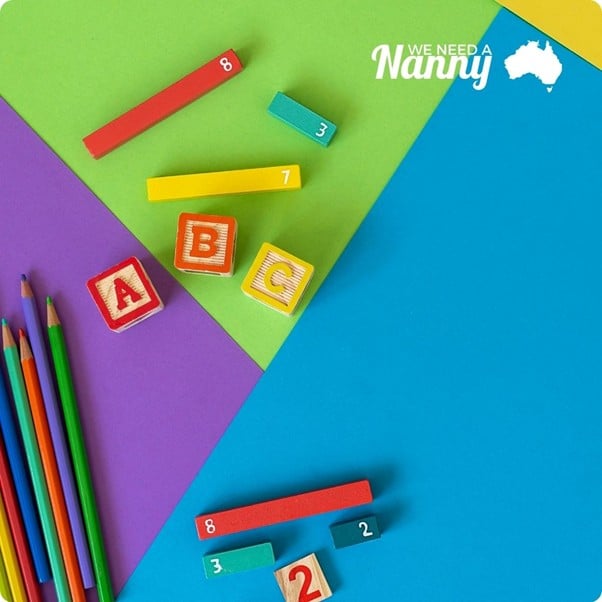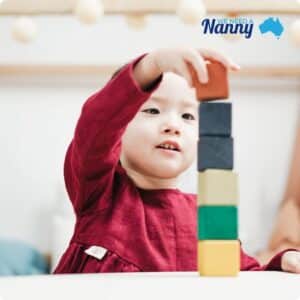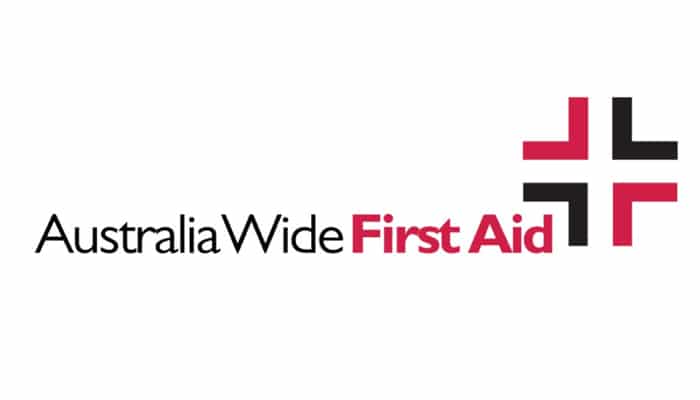Children require a well-rounded learning experience in their daily routine and education, including free play and fun educational activities. They need structured learning opportunities and unstructured free play opportunities to express their creativity and enjoy some freedom.
Parents hire professional nannies with the expectation that they comprehend the balance between free play time and more structured educational play. A nanny in Melbourne can provide your child with a mix of guided and independent activities in their daily routine to help them develop physically, emotionally and cognitively while enhancing their social skills.
In this guide, we will examine a few methods that your nanny in Melbourne can use to engage your children in a balanced educational and free-play environment.
Understanding the Difference Between Free Play and Educational Play
Firstly, it is important to know that both educational play and free play are equally essential for your child’s overall development. However, each category of play serves a different purpose in your child’s complete developmental journey and daily routine.
- Free Play – Free play is child-led, where the child enjoys time to explore their environment, use their imagination and create their own independence while playing.
- Educational Play – Educational play is a more structured form of play with an integrated learning objective in an engaging activity, usually led by a parent or caretaker.
Your nanny can set up specific play stations in your home where children can engage in more structured activities such as;
- Shape-Matching Games.
- Puzzles.
- Building Blocks.
- Story-telling sessions.
At the same time, they can provide a range of free play opportunities, in which case children can:
- Explore independently.
- Create their own games.
- Read by themselves.
- Draw or create something using art and craft materials.
- Play outside.
The Importance of Free Play and Educational Play
To thrive, children require a balanced dose of educational and free play. While educational play provides structured learning opportunities, free play allows for more creative exploration.
Educational Play
Educational play offers more structured activities designed around certain learning outcomes. Children thrive on daily routines, which provide them with stability when they know what to expect. For example, having a set time to read, build a puzzle or do an art project.
Structured educational play helps young children feel secure in their daily schedules. It is also essential for developing cognitive skills and fine motor skills.
Free Play
Free play is a time when a child can explore and use their own creativity. Free play encourages more social development and problem-solving skills. It teaches children to become independent and to find their own identity.
Free play allows flexibility, where kids can engage in fun activities that usually have no specific learning outcome or instruction.
7 Tips for Your Nanny in Melbourne to Balance Free Play and Educational Play
1. Incorporate Structure to Ensure Stability
Children thrive on consistent routines. They can easily feel overwhelmed and agitated when they do not know what to expect. While educational play should have more structure and free play more flexibility, the overall home environment and daily schedule must have a set structure to provide guidance.
Here are a few simple routines your nanny can implement to ensure more structure in both free play and educational play:
- Establish a structured morning routine with a few minutes for free play throughout, such as before eating breakfast or getting dressed.
- You can use verbal cues such as a bell, whistle or even song to indicate the end of one activity and the shift from free play to the next activity.
- Use a daily schedule with predictable elements, such as having lunch, enjoying free outdoor time and doing structured activities like puzzles.
- In the evenings, you can include more relaxing structured activities and free time before bath time or bedtimes to allow the child to do some final exploring and wind down for bed.
2. Encourage Free Play for Creative Exploration
Even though structured activities may incorporate plenty of play and fun, nannies must still allow children to enjoy free play without any intervention. Free play means the child is not directing their activity towards any form of lesson and is only observed and not guided.
You can encourage free play in the following ways:
- Comment on what the child is creating or doing. For example, when they are drawing, comment on their colours and shapes rather than suggesting a change.
- Allow the child to make their own rules while playing, especially during imaginative play, to ensure they are safe.
- Provide the child with open-ended materials that they can use to play with and explore without a predetermined goal in mind. You can include materials such as art supplies, natural elements or even fabric scraps.
3. Differentiate Between Child-Led and Nanny-Led Activities
As a nanny, you must know the difference between a child playing on their own and being guided. It may seem that you are allowing free play, while in essence, your guidance and instructions may lean more towards structured educational play.
Child-led or free play by nature allows the child to make independent decisions and explore their environment without an ultimate goal. Nanny-led activities or educational play incorporate a learning objective and include guidance and structure implemented by the parent or nanny.
Two examples of educational play and free play are:
- Playing Dress Up
Child-led – The child is given various costumes and allowed to choose what they want to wear and how they want to invent their own storyline.
Nanny-led – The child is given more specific costumes and a storyline, encouraging role-play with a specific scenario and outcome.
- Drawing
Child-Led – The child is given various drawing materials and allowed to draw anything they want without guidance.
Nanny-led – The child is given a request or example of what to draw and specific materials while the nanny guides the child throughout the drawing process.
4. Create an Engaging Home Environment for Play
Children require a safe and well-organised home environment to explore and play while learning and developing their skills. Children feel secure and more confident about exploring when their surroundings are more organised.
Your nanny in Melbourne can establish and decorate designated play areas for your child, using themes or colours to inspire imaginative and educational play.
Here are a few ways to create a more engaging environment:
- Establish a designated area for educational play with learning toys, such as puzzles and blocks that are more structured and organised.
- Create a designated area for free play, such as a kitchen set-up or a small workshop, for pretend play. Provide safe toys that the child can explore and use.
- Try to rotate the toys from both areas regularly to curb boredom and keep play exciting and challenging.
- You can also set up a sensory play or work area that contains toys and materials such as sand, textured objects or clay for sensory stimulation and learning.
- Provide access to educational toys such as puzzles, blocks, and games that encourage problem-solving and literacy development during educational play.
5. Establish a Healthy Routine for Educational and Free Play
You can incorporate a healthy “play” routine with your structured daily routine that balances educational and free play.
- Include a morning activity before their morning routine, such as a simple greeting, morning song or discussing the weather for the day.
- After the morning routine, which includes some mid-morning educational activities such as sorting shapes or recognising letters, there is some free play time and a snack.
- Encourage outdoor play time where the child can run, climb and jump freely while implementing some structured activities to engage their gross motor skills.
- Include a few late afternoon creative activities, such as educational drawing or painting, and a free play session before the night routine starts.
- Implement quiet time, during which the child can enjoy reading or listening to music for a short while. This is usually best before bedtime when the child needs to wind down.
A routine lets children know exactly what to expect, making them feel more secure and stable in their environment.
6. Manage Their Screen Time
Though it is a debatable and touchy subject, screen time is not always bad for children. Plenty of safe and educational applications are available online that children can access using a tablet or similar device.
However, managing screen time and what children can access for balanced learning and play is essential.
- Set clear limits when digital play is allowed for free play and educational play.
- Keep in mind that screen time is a supplement for free play or educational play and not a replacement for hands-on learning.
- Choose quality, age-appropriate educational content that aligns with the child’s learning goals and your values as a parent.
- Coding and interactive games are good choices for educational play, while short YouTube stories are creative for free or for a fee.
- Encourage more active engagement by asking children about what they are experiencing on screen or having them recreate their favourite scenes from a story or movie.
- Create a clear and healthy balance between on-screen and off-screen activities. Implement more off-screen activities, such as drawing characters from a specific show rather than just watching the next episode.
7. Finding the Right Balance
Your nanny in Melbourne must implement observation and flexibility into these activities to find the perfect balance between educational play and free play.
- Observe the Child’s Energy Levels During the Day – Observe the child’s energy levels during the day and plan activities that match their energy. Plan activities such as sports and active learning when children are more active and creative activities later in the day.
- Pay Attention to Interests – Find out where the child’s interests lay, and use their interest to structure activities and create fun and engaging play routines around their interests.
- Encourage Independence – Encourage the child to make more independent decisions, especially during free play. Allow them to choose between activities during educational play.
- Be Flexible – You may notice that a child requires more structured learning one day and then is not as interested in this on another day. Try to adapt your routine slightly, allowing for more free exploration when children are struggling to focus at a specific point in time.
In Conclusion
By following these tips, a nanny in Melbourne can encourage children to participate in educational and free-play activities. By having structured and unstructured activities daily, children can learn and explore freely and thrive in both environments.
A stable routine that supports a mixture of free play and educational play allows the child to enjoy the best of both worlds while fostering creativity and overall development.
Parents seeking a nanny in Melbourne with the experience and qualifications to balance learning and creativity in structured and unstructured activities can contact a reliable nanny agency to find a suitable caregiver.
Ultimately, creating a more enriching environment for your children where they can enjoy learning and have the freedom to explore sets them up for success in school and life.










